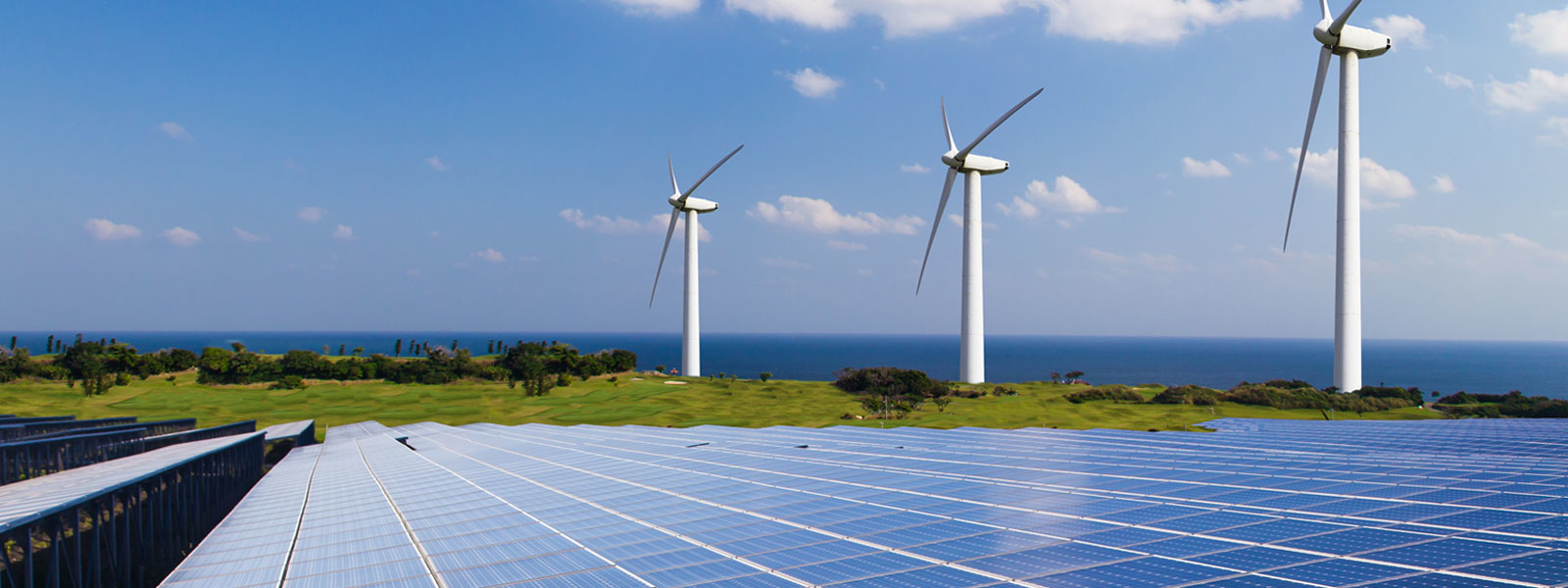
World leaders and delegates are meeting in Glasgow for the next round of climate change negotiations at the twenty sixth Conference of the Parties ("COP26") being held from 31 October to 12 November, following a year-long postponement caused by the COVID-19 pandemic. COP26 serves as the vital next step in the process for the 197 parties to the United Nations Framework Convention on Climate Change ("UNFCCC") to implement the legally binding international climate treaty – the Paris Agreement – which was adopted at COP21 in Paris on 12 December 2015 and entered into force on 4 November 2016.1 Its goal is to limit global warming such that the global average temperature rises by no more than 1.5°C (2.7°F) above pre-industrial levels or, failing that, by no more than 2°C (3.6°F),2 in order to prevent the catastrophic and irreversible anthropogenic climate change that the Intergovernmental Panel on Climate Change ("IPCC") projects will occur if this is not achieved.3
In July 2020, COP26 President Alok Sharma set out five key areas of focus in the run-up to COP26: the first was energy, followed by transport, nature-based solutions, adaptation and resilience and, tying it all together, finance.4 There is widespread consensus that an energy transition grounded in reliable sources and technologies is the only realistic way to meet the Paris Agreement goals.
WEO-2021: The Guidebook for COP26
The International Energy Agency published its World Energy Outlook Report in October 2021,5 a month earlier than usual so as to be in circulation ahead of COP26 (the "WEO-2021"); it self-proclaims to serve "as an essential guidebook to COP26". This COP, short for the "Conference of the Parties", the main decision-making body of the UNFCCC, is particularly significant. It falls five years after the entry into force of the Paris Agreement and is arguably the first critical opportunity to test the readiness of countries to submit new and more ambitious carbon reduction commitments, by way of updates to their Nationally Determined Contributions, previously agreed to under the 2015 Paris Agreement. It is also an opportunity, as the WEO-2021 states, to provide an "unmistakeable signal" that accelerates investment in a sustainable future and the transition to clean energy worldwide.
According to the WEO-2021, the energy sector accounts for three-quarters of the greenhouse gas emissions globally that have already caused global average temperatures to rise 1.1°C higher than pre-industrial levels, with visible impacts on weather and climate extremes.
The energy sector therefore has to be at the heart of the solution to tackling the climate crisis.
It is widely recognised that a new global energy economy is emerging, but the transformation still has a long way to go. The baseload of energy in the early stages of the transition will be provided by gas, wind and nuclear, and the ultimate long-term objective is an efficient mix of energy sources that can provide secure and affordable renewable energy at scale. The WEO-2021 warns that the rapid but uneven economic recovery from the COVID-19 pandemic-induced recession is putting major strains on parts of today's energy system, sparking sharp price rises in natural gas, coal and electricity markets and, for all the advances being made by renewables and electric mobility, 2021 is seeing a large rebound in coal and oil use. As a result, according to WEO-2021, 2021 has seen the second largest annual increase in CO2 emissions in history.
In the run up to COP26, increasingly ambitious carbon emission reduction pledges have been made by some governments, municipalities, companies and financial institutions. The WEO-2021 suggests that countries pledging to reach net zero emissions now account for 60 – 70 per cent of today's global GDP and energy-related CO2 emissions, and around one-third of energy-related methane emissions; a promising step in the right direction on the journey to net zero.
A Rapid, Just and Secure Energy Transition
It is widely acknowledged that the pace of transition away from fossil fuel-powered assets to cleaner and renewable generation assets needs to accelerate. Predictions suggest a four-fold acceleration over the next decade is required if the Paris Agreement targets of reducing global temperature rises to no more than 1.5 degrees Celsius compared to pre-industrial levels and the shift to net zero are to be achieved.
The barriers and challenges to the energy transition are no doubt different for developed countries and developing countries. Developing countries that have historically contributed a small proportion of global greenhouse emissions are in many cases trying to industrialise (often reliant on carbon intensive industries) so that, amongst other things, their citizens have universal energy access, and yet are being expected to transition at the same pace as developed countries, without the financial and technical resources needed to get there. For example, excluding South Africa, the remaining 1 billion people in Sub-Saharan Africa are serviced by a power generating capacity of around 80 gigawatts and have contributed less than 1 per cent of cumulative CO2 emissions. This is roughly the same capacity consumed by a single European country such as Germany.6
It is widely accepted that a rapid and just transition to clean energy, at both international and national scales, is vital. The WEO-2021 emphasises that countries' transitions have to be "secure, affordable and fair for all citizens", and in this vein, the UK recognises that the energy transition should be undertaken in a manner that is fair and equitable to those currently working in and supporting the carbon-intensive oil and gas industries.
According to the WEO-2021, current investment levels in the global energy sector are inadequate – both to meet near-term energy needs and long-term transition goals. It warns that the dangers inherent in today's shortfall in spending on the clean energy transition globally, compared to the levels required, cannot be understated; and the shortfall is most pronounced in developing economies. An acceleration of capital flows in support of the energy transition, and particularly in developing economies, is needed. It is recognised that such investment will need to come from private developers, consumers and financiers responding to market signals and policies set by governments.
Powering Past Coal
In most markets, the cost of renewable energy such as solar PV and wind is now cheaper than coal and there is increasing pressure to phase out coal worldwide. COP President Alok Sharma has called for COP26 to "consign coal to history" and the Powering Past Coal Alliance ("PPCA") is one of the primary vehicles that is facilitating achievement of this goal at COP26 and beyond.7 Initially created by the governments of the United Kingdom and Canada in 2017, the PPCA is today a coalition of more than 130 members including countries, cities, banks and utilities committed to phasing out unabated coal power, and to ending the international financing of new coal plants, and the PPCA-led momentum has gained apace in 2021.
The UK has also launched the COP26 Energy Transition Council ("ETC") as part of its COP26 presidency, which aims to bring global leadership together to accelerate the transition to clean power. In its first statement in December 2020,8 the ETC confirmed its plans to seek opportunities, inter alia, (i) to make clean power technologies the preferred option for countries investing in new power generation, with the aim of doubling the rate of investment in clean power by 2030, and (ii) to develop policy and regulatory frameworks to attract the private sector to help deliver and finance these investment needs.
The Evolving Role of the Oil & Gas Industry: Investment and Accountability
The oil and gas industry increasingly recognises that, in order to survive long term, it must reimagine how it will fit into the energy mix going forward. Oil and gas majors, including BP9 and Shell,10 are increasingly announcing their net zero emission pledges at a company level and are becoming ever more central players in the clean energy and transport markets as they explore investment opportunities to diversify their portfolios and reposition themselves in the energy industry. Globally, the oil and gas industry is central to actively driving the transition to a cleaner and broader energy mix, with a pivotal role at the forefront of developing and investing in much needed new carbon abatement technologies, such as hydrogen and carbon capture utilisation and storage ("CCUS"), that other industries can deploy whilst keeping the lights on. CCUS represents a game changer for the oil and gas industry, allowing oil and gas majors to keep producing oil, albeit with fewer greenhouse gas emissions, and oil and gas majors are well positioned to drive developments in hydrogen given their expertise in transporting and selling gas.11
As more oil and gas majors declare their plans and strategies to achieving net zero, accountability – to regulators around the world, to other oil and gas companies, to shareholders and investors, to the workforce and to the general population in the societies in which they operate – will be critical, as these stakeholders become ever more concerned about the environmental impact of their own investments, the industry within which they work, and/or the energy they consume.
Decommissioning Responsibly
As the pace of transition increases and the dominance of fossil fuels in the global energy mix declines, it can be expected that the pace of decommissioning of oil and gas production platforms and assets will necessarily increase. Decommissioning activities will need to be carried out in a manner that supports the journey to net zero. Ensuring decommissioning is undertaken in both an economically efficient and low-carbon way will be a delicate balancing act in which the oil and gas industry will play an integral and fundamental part.
Opportunities for Businesses and Governments: COP26 and beyond
Collaboration between all stakeholders at COP26 and beyond will be key. The Paris Rulebook, the rules needed to implement the Paris Agreement, is set to be finalised at COP26 (negotiations at COP25 in Madrid in 2019 failed to resolve the rules, inter alia, for carbon market mechanisms), and there is a focus on accelerating action through collaboration between governments, businesses and civil society.12
It is widely recognised that the shift to net zero presents a significant opportunity for a number of businesses. Collaboration between historically disparate industries, such as the existing oil and gas and power and renewables industries, which each have their own regulatory requirements to comply with, and who are likely familiar with certain industry-standard contracting structures, will be fundamental to achieving net zero as efficiently and reliably as possible. Significant interaction with Governments will also be required, especially in terms of implementing updates to legislative or regulatory frameworks.
The new emerging energy economy also has the potential to create millions of jobs across a host of new and cleaner supply chains and to improve people's livelihoods at a global scale. To make this a reality, government leaders meeting at COP26 in Glasgow must play their part and seize the opportunity that COP26 presents firmly with both hands and make stronger and more ambitious commitments than previously – they must be more than a drop in a rapidly warming ocean. Governments are ultimately in the driving seat with unparalleled capacity to direct the decarbonisation of energy systems worldwide and to ensure the 2020s is a decade of dedicated clean energy investment and deployment at scale. As COP President Alok Sharma made resoundingly clear in his opening speech: "[T]his COP, COP26, is our last best hope to keep 1.5 in reach".13
1 UNFCCC "The Paris Agreement", available at: https://unfccc.int/process-and-meetings/the-paris-agreement/the-paris-agreement
2 COP26 goals, available at: https://ukcop26.org/cop26-goals/
3 IPCC Sixth Assessment Report, 7 August 2021, available at: https://www.ipcc.ch/report/ar6/wg1/downloads/report/IPCC_AR6_WGI_Full_Report.pdf
4 International Energy Agency Speech given on 9 July 2020, available at: https://www.gov.uk/government/speeches/international-energy-agency-summit-on-clean-energy-transitions
5 International Energy Agency World Energy Outlook 2021 available at: https://iea.blob.core.windows.net/assets/888004cf-1a38-4716-9e0c-3b0e3fdbf609/WorldEnergyOutlook2021.pdf
6 International Science Council blog "Accelerating the energy transition through energy access", available at: https://council.science/current/blog/accelerating-the-energy-transition-through-energy-access/
7 Powering Past Coal Alliance website, available at: www.poweringpastcoal.org
8 COP26 Energy Transition Council Summary Statement, available at: https://www.gov.uk/government/publications/cop26-energy-transition-council-summary-statement
9 BP Press Release "BP sets ambition for net zero by 2050, fundamentally changing organisation to deliver", available at: https://www.bp.com/en/global/corporate/news-and-insights/press-releases/bernard-looney-announces-new-ambition-for-bp.html
10 Shell "Our Climate Target", available at: https://www.shell.com/energy-and-innovation/the-energy-future/our-climate-target.html#iframe=L3dlYmFwcHMvY2xpbWF0ZV9hbWJpdGlvbi8
11 IRENA "International Oil Companies and the Energy Transition", available at https://www.irena.org/-/media/Files/IRENA/Agency/Publication/2021/Feb/IRENA_Oil_Companies_Energy_Transition_2021.pdf
12 COP goals, "Collaboration: Finalise the Paris Rulebook", available at: https://ukcop26.org/cop26-goals/collaboration/
13 Alok Sharma’s COP26 Opening Speech, available at: https://www.gov.uk/government/speeches/cop26-president-alok-sharmas-opening-speech-at-cop26
White & Case means the international legal practice comprising White & Case LLP, a New York State registered limited liability partnership, White & Case LLP, a limited liability partnership incorporated under English law and all other affiliated partnerships, companies and entities.
This article is prepared for the general information of interested persons. It is not, and does not attempt to be, comprehensive in nature. Due to the general nature of its content, it should not be regarded as legal advice.
© 2021 White & Case LLP


